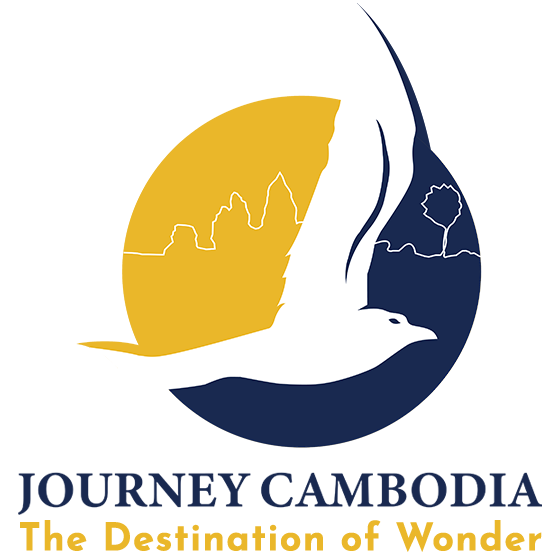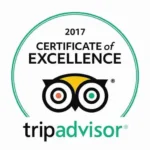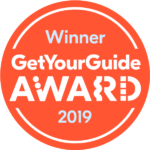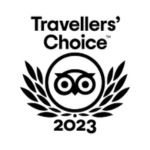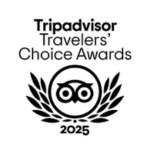Is Cambodia Safe for Travel in 2025? What Tourists Should Actually Worry About
Is Cambodia safe for travel? Yes, it is. Most visitors have great trips without problems. You just need to know what to watch out for.
Is Cambodia Safe for Travel? The Truth Behind the Fear
Let me be straight with you. Cambodia travel safety gets a bad rap that it doesn’t deserve. The US State Department rates Cambodia as Level 1 – “Exercise Normal Precautions.” That’s the same rating as many places you visit without thinking twice.
Here’s what actually matters for your safety:
- Petty crime happens but isn’t common
- Traffic accidents are the real danger
- Some old landmines exist in remote areas
- Most tourist areas are very safe
Cambodia welcomed 2.64 million visitors in early 2024. That number jumped 22% from the year before. People keep coming back because is it safe to visit Cambodia? The answer is yes for smart travelers.
Cambodia sits in Southeast Asia between Thailand and Vietnam. Two main cities matter for tourists: Phnom Penh (the capital) and Siem Reap (gateway to Angkor Wat). Both cities have tourist police and good medical care.
1. Crime Reality Check: What Actually Happens to Tourists
Cambodia crime rate dropped big time since 2007. Murder rates fell 16% each year from 2007 to 2011. That trend kept going.
Most crime against tourists involves:
- Phone snatching from motorcycles
- Pickpocketing in busy areas
- Hotel room theft (rare but happens)
- ATM scams
Safety in Phnom Penh needs more attention than other places. The capital sees most tourist crime. About 63% of incidents happen near the riverfront area.
Crime Stats That Matter
| Type of Crime | Frequency | Risk Level |
|---|---|---|
| Bag snatching | Most common | Medium |
| Hotel theft | Rare | Low |
| Violent crime | Very rare | Very low |
| Scams | Common | Medium |
Only 22% of theft victims get hurt. That happens when people fight back. Smart move? Just give them your phone.
Violent crime against tourists stays uncommon. Cambodia ranks 71st worldwide on the 2024 Global Peace Index. That puts it in the middle for Southeast Asia.
2. Phnom Penh Safety: Capital City Survival Guide
Safety in Phnom Penh requires street smarts. This city of 2 million people has the country’s highest crime rates. But don’t panic – millions of tourists visit safely every year.
Phnom Penh sits where three rivers meet. The French built grand buildings here in colonial times. Today it mixes old charm with modern chaos. Tuk-tuks fight for space with fancy SUVs. Street food vendors sell next to upscale restaurants.
Areas to Watch Out For
- Riverfront after 10 PM – bag snatchers love this spot
- BKK district side streets – stick to main roads
- Independence Monument area – especially at night
- Markets and bus stations – pickpockets work crowds
Phnom Penh Safety Tips
- Use hotel safes for valuables
- Take tuk-tuks with metal grills (they protect against snatching)
- Don’t walk around with your phone out
- Stay in groups after dark
- Book hotels in central areas
The city has amazing sites to see. Phnom Penh’s emotional heritage sites tell the country’s tough history. These tours help you understand Cambodia better. They’re also safer than wandering alone.
3. Siem Reap Safety Tips: Your Temple Town Haven
Siem Reap safety tips start with this fact: it’s way safer than Phnom Penh. This tourist town exists to serve temple visitors. Police know their jobs depend on keeping tourists safe.
Siem Reap grew from a small village to house one million visitors yearly. Hotels and restaurants line every street. Tuk-tuk drivers speak basic English. The whole town revolves around trips to Angkor Wat.
The town sits 6 miles from Angkor Archaeological Park. Ancient Khmer kings built over 1,000 temples here between 800-1400 AD. Angkor Wat is just the most famous one.
What Actually Hurts Tourists in Siem Reap
- Heat exhaustion (way more common than crime)
- Dehydration during temple visits
- Monkey theft at temples (they grab shiny things)
- Minor theft from unattended bags
Heat kills more tourists than criminals do. Cambodia gets hot. Really hot. Temperatures hit 100°F regularly. Humidity makes it feel hotter.
Smart Siem Reap Strategies
- Start temple visits at 5:30 AM – beat heat and crowds
- Carry more water than you think you need
- Buy your Angkor Wat entrance ticket from official sources only
- Leave valuables at your hotel during temple tours
- Book the golden hour at Angkor Wat tour for stunning photos
The 5 Angkor empty temples tour takes you to amazing spots without crowds. Less people means less theft risk. Plus you get better photos.
4. Transportation Terrors: Cambodia’s Real Danger
Here’s the hard truth about Cambodia transportation safety: traffic accidents kill way more tourists than criminals do. Cambodia had 1,509 traffic deaths in 2024. That’s about 4 people daily.
Road Death Statistics
| Year | Deaths | Daily Average | Change |
|---|---|---|---|
| 2023 | 1,590 | 4.4 | – |
| 2024 | 1,509 | 4.1 | -5% |
Numbers got better but they’re still scary. Most accidents involve motorcycles. About 68% of deadly crashes include bikes.
Why Roads Are Dangerous
- Poor vehicle maintenance (43% of rental bikes have bad brakes)
- No real traffic rules
- Drunk driving is common
- Animals on roads at night
- Bad lighting everywhere
Motorcycle Safety Rules
- Never ride without a proper helmet (not those thin plastic things)
- Avoid night driving outside cities
- Don’t ride after drinking
- Check brakes before renting
- Stay off highways if possible
Safer Ways to Get Around
- Tuk-tuks with metal grills protect against bag snatchers
- Hotel transportation for airport runs
- PassApp or Grab ride-sharing in cities
- Registered taxi companies for long trips
I’ve seen too many tourists get hurt on motorcycles. It’s just not worth the risk. Stick to four wheels when possible.
5. Health Hazards: What Makes Tourists Sick
Cambodia health risks are manageable if you prepare. Most health problems come from heat and bugs, not diseases.
Common health issues:
- Heat exhaustion and dehydration
- Stomach problems from food/water
- Dengue fever from mosquitoes
- Cuts that get infected in the heat
Medical Care Reality Check
Phnom Penh has decent private hospitals:
- Royal Phnom Penh Hospital
- International SOS Medical Centre
- English-speaking doctors available
Siem Reap has basic care:
- Angkor Hospital for Children
- Royal Angkor International Hospital
- Good for minor problems
Rural areas have almost nothing. Serious cases need transport to Phnom Penh or Bangkok. That’s expensive without insurance.
Health Insurance Must-Haves
- Medical evacuation ($100,000 minimum)
- Emergency medical ($50,000+)
- Motorcycle coverage if you plan to ride
Don’t skip travel insurance. Medical evacuation from Cambodia costs $50,000+. One helicopter ride can bankrupt you.
6. Landmine Legacy: Old Dangers in Remote Places
Dangerous areas in Cambodia still have leftover landmines. But here’s context: casualties dropped 99% since the 1990s.
2024 Landmine Facts
- 49 total casualties (vs 4,320 in 1996)
- Most victims are farmers, not tourists
- Tourist areas got cleared years ago
- Accidents happen in remote border areas
High-Risk Places to Avoid
- Oddar Meanchey province (41% of active minefields)
- Remote parts of Battambang
- Areas around Preah Vihear temple
Safe Landmine Practices
- Stay on marked paths always
- Don’t pick up metal objects you find
- Use certified guides in rural areas
- Stick to established roads
Tourist areas are safe. The government cleared popular spots first. Angkor temples have zero landmine risk.
7. Scam School: New Tricks, Old Problems
Tourist scams in Cambodia evolved beyond simple pickpockets. The big worry now is organized crime groups, especially in Sihanoukville.
Common Scams to Spot
- Fake job offers – teaching or online work scams
- Gem deals – “cheap” precious stones that are fake
- Taxi meter tricks – always demand they use the meter
- ATM skimming – stick to bank machines only
- Charity kids – organized begging rings
Sihanoukville Special Alert
This coastal city has serious organized crime problems. Chinese groups run illegal operations here. Safe places in Cambodia include most areas, but Sihanoukville needs extra care:
- Research hotels very carefully
- Avoid empty areas at night
- Be suspicious of “easy money” offers
- Report weird stuff to police
Many travelers now skip Sihanoukville entirely. Other beach towns are safer.
8. Solo Travel Cambodia Safety: Going It Alone
Solo travel Cambodia safety is totally doable. Both men and women travel Cambodia alone successfully. But solo travelers face higher risks because they:
- Look like easier targets
- Have no backup if things go wrong
- Carry all their valuables with them
- Make riskier transport choices
Solo Female Travel Tips
Cambodia treats women travelers pretty well. But extra care helps:
- Stay in female dorms when possible
- Don’t walk alone after dark
- Dress more conservatively than at home
- Trust your gut about people and places
- Connect with other travelers
Solo Male Travel Considerations
Men face different risks:
- More likely to get drunk and make bad choices
- Target for bar fights and scams
- Pressure to do risky activities
- Less likely to ask for help
9. Backpacking Cambodia Safety: Budget Travel Risks
Backpacking Cambodia safety requires extra planning. Budget travelers face more risks because they:
- Use cheaper (more dangerous) transport
- Stay in less secure places
- Visit remote areas more often
- Can’t afford medical care
Backpacker Safety Investment ($50 total)
- Good padlock for lockers ($5)
- Hidden money belt ($10)
- Offline maps app (free)
- Emergency whistle ($3)
- Basic first aid kit ($15)
- Travel insurance ($15-20/day)
That $50 investment could save your life. Or at least your trip.
Budget-Friendly Safety Strategies
- Split your money – keep some hidden, some accessible
- Travel insurance is non-negotiable
- Team up with other travelers
- Avoid night buses – accidents happen more at night
- Research places before arriving
10. Cambodia Night Safety: After Dark Rules
Cambodia night safety changes dramatically by location. Here’s where you can relax vs where you need to worry.
Siem Reap After Dark
Pretty safe in tourist areas. Night markets stay busy until late. Pub Street has decent security. Just don’t get too drunk and wander off.
Phnom Penh After Dark
Higher risk, especially these spots:
- Riverfront after 10 PM
- Empty side streets in BKK district
- Independence Monument area
- Isolated spots near markets
After Dark Safety Rules
- Use hotel transport when possible
- Travel in groups (even one other person helps)
- Keep phones hidden while walking
- Stay where other people are
- Trust your instincts – if it feels wrong, leave
Night activities exist but need planning. Don’t just wander around hoping for the best.
11. Police in Cambodia: What to Expect
Police in Cambodia improved a lot over recent years. Tourist police units work in major destinations. But challenges remain.
Tourist Police Locations
- Siem Reap (dedicated unit)
- Phnom Penh (tourist police stations)
- Major temples and sites
Working with Police
- Tourist police usually speak basic English
- Regular police might not
- Corruption exists but decreased
- Always ask for receipts for payments
Emergency Numbers Cambodia
Keep these in your phone AND written down:
- Tourist Police: 012-969-991
- General Emergency: 117 or 118
- Fire Department: 118
- Medical Emergency: 119
Police response varies by location. Tourist areas get faster service.
12. Money Matters: Protecting Your Cash
Petty theft in Cambodia often targets money and phones. Smart cash management cuts your risks.
What Thieves Want Most
- iPhones and smartphones
- Cash in easy-to-grab wallets
- Expensive cameras
- Jewelry and watches
- Passports (they sell them)
Money Safety Strategy
- Hotel safes for passport originals
- Carry only daily spending money
- Hide backup cards separately
- Use ATMs inside banks
- Keep emergency cash in multiple spots
Cambodia uses US dollars for most stuff. ATMs give out USD. Credit cards work in nice places.
ATM Safety Rules
- Use machines inside banks only
- Cover your PIN entry
- Check for card skimmers
- Have someone watch your back
13. Safe Accommodations Cambodia: Where to Sleep
Safe accommodations Cambodia vary by budget and location. Here’s what works:
Budget Options ($10-30/night)
- Guesthouses in central areas only
- Hostels with 24-hour front desk
- Places with secure lockers
Mid-Range Hotels ($30-80/night)
- International chains when available
- Hotels with security guards
- Central locations near tourist police
Luxury Options ($80+/night)
- International hotel brands
- Private security and room safes
- Concierge help with transport
Hotel Safety Checklist
✓ Working locks on doors and windows ✓ Room safe or secure storage
✓ 24-hour front desk ✓ Good lighting around property ✓ Recent reviews mentioning safety
Book central locations. Saving $10/night isn’t worth ending up somewhere dangerous.
14. Cambodia Border Crossing Safety: Entry and Exit
Cambodia border crossing safety usually goes smooth. Most problems involve paperwork delays, not dangers.
Popular Border Crossings
- Poipet (Thailand) – busy, some scams
- Bavet (Vietnam) – efficient, fewer problems
- Dong Kralor (Laos) – remote but safe
Border Safety Tips
- Use official crossings only
- Have exact change for visa fees
- Don’t pay “express” fees to random people
- Keep passport secure but ready
- Be patient with long lines
Visa Info 2025
- 30-day tourist visa: $30 USD
- Available at borders or online (e-visa)
- Need passport photo and exact change
- Some borders take credit cards now
15. Seasonal Safety: When to Go
Cambodia safety 2025 changes with seasons. Weather affects both comfort and safety.
Dry Season (November-April)
Best for safety:
- Roads in better shape
- Less flooding risk
- Better driving visibility
- More tourists = more security
Watch out for:
- Extreme heat (March-May)
- Higher prices and crowds
- Dust and air pollution
Wet Season (May-October)
Challenges:
- Flooding blocks roads
- More motorcycle accidents
- Some rural areas become unreachable
- Mosquito diseases peak
Benefits:
- Fewer crowds
- Lower prices
- Cooler temperatures
- Lush green scenery
I prefer the shoulder seasons (November-December, April-May). Weather’s decent and crowds are manageable.
16. Cultural Safety: Avoiding Offense
Respecting local culture keeps you safe AND welcome. Cambodia is Buddhist with strong traditions.
Cultural Safety Rules
- Cover shoulders and knees at temples
- Remove shoes before entering homes/temples
- Don’t touch people’s heads
- Show respect to monks
- Don’t point feet toward Buddha statues
Photography Rules
- Ask before photographing people
- No photos of police or military
- Respect “no photo” signs at temples
- Be sensitive at historical sites
Political Safety
- Don’t discuss politics publicly
- Avoid protests or big gatherings
- Respect the monarchy (criticism is illegal)
- Don’t photograph government buildings
Breaking cultural rules won’t get you arrested but it can cause problems.
17. Communication and Connectivity
Staying connected improves safety. Here’s how to do it right.
Phone and Internet
- SIM cards cost $1-5 at airports
- Most areas have 4G coverage
- WiFi common in hotels and cafes
- Download offline maps before traveling
Staying in Touch
- Share your plans with someone at home
- Check in regularly via messaging apps
- Join traveler Facebook groups
- Register with your embassy for long stays
Useful Safety Apps
- Google Translate – talk to locals
- Maps.me – offline maps
- PassApp – ride hailing
- What3Words – share exact locations
- TravelSafe – embassy contacts
18. Food and Water Safety
Getting sick ruins trips. Most stomach problems come from food and water.
Safe Eating Rules
- Eat where locals eat (busy places)
- Avoid raw vegetables and salads
- Stick to bottled water
- Ice is usually safe in tourist areas
- Street food is generally fine if it’s hot
Foods to Avoid
- Raw or undercooked meat
- Dairy products (might be unpasteurized)
- Cut fruit from street vendors
- Tap water anywhere
If You Get Sick
- Stay hydrated with oral rehydration salts
- Stick to simple foods (rice, bananas)
- See a doctor if fever develops
- Don’t take antibiotics without medical advice
Most stomach bugs last 24-48 hours. Severe cases need medical care.
19. Insurance and Medical Prep
Travel insurance isn’t optional for Cambodia. Medical evacuation costs $50,000+.
Essential Coverage
- Medical emergency: $50,000 minimum
- Medical evacuation: $100,000+
- Trip cancellation: full trip cost
- Personal belongings: $1,000+
- Motorcycle coverage if riding
Pre-Trip Medical Prep
- See travel doctor 4-6 weeks before
- Update routine vaccinations
- Get hepatitis A and B shots
- Consider Japanese encephalitis vaccine
- Pack basic medications
Emergency Planning
- Research nearest hospitals
- Download insurance company app
- Keep policy numbers handy
- Know how to contact your embassy
- Have emergency contacts ready
20. Travel Advisories Cambodia: Government Warnings
Travel advisories Cambodia from major governments are pretty mild:
Current Advisory Levels
- USA: Level 1 (Normal Precautions)
- UK: Standard travel advice
- Australia: Normal safety precautions
- Canada: High degree of caution
Level 1 warnings are routine. They don’t mean “don’t go.” They mean “use common sense.”
What Advisories Actually Say
- Petty crime in urban areas
- Landmines in remote regions
- Road safety concerns
- Avoid large gatherings
These warnings help but don’t paint the full picture. Millions visit Cambodia safely every year.
21. Special Traveler Considerations
Families with Kids
Cambodia welcomes families. Kid-specific safety concerns:
- Heat exhaustion happens faster in children
- Mosquito protection extra important
- Dairy products might upset stomachs
- Keep kids close in crowded areas
- Have pediatric medications ready
LGBTQ+ Travelers
Cambodia has no anti-gay laws. Culture is tolerant but not openly supportive.
- Public displays of affection (any couple) uncommon
- Cities more accepting than rural areas
- Use common sense about when/where to be open
Travelers with Disabilities
Cambodia’s accessibility is limited:
- Few wheelchair ramps
- Uneven sidewalks everywhere
- Limited accessible bathrooms
- Temple visits physically demanding
- Plan accommodations very carefully
22. Emergency Preparedness: Be Ready
Smart preparation prevents small problems from becoming disasters.
Travel Emergency Kit
Pack these in your day bag:
- Copy of passport/visa
- Emergency cash ($100+ USD)
- Basic medications
- Emergency contact numbers
- Embassy contact info
- Insurance policy details
Medical Emergency Steps
- Call 119 (local emergency)
- Contact insurance company immediately
- Notify embassy for serious situations
- Have someone contact family
- Keep all medical receipts
Lost Passport Process
- Report to local police immediately
- Contact your embassy/consulate
- Get police report copy
- Apply for emergency travel document
- Notify immigration if needed
23. Real Traveler Experiences: Learning from Others
Real stories teach better than statistics.
Most Common Problems
Based on traveler reports and embassy data:
- Stomach issues (80% get minor problems)
- Sunburn and heat exhaustion
- Minor motorcycle accidents
- Phone theft from bag snatching
- ATM card problems
Success Stories
Most visitors love Cambodia:
- Incredibly friendly people
- Amazing food (when careful about sources)
- Stunning historical sites
- Great value for money
- Life-changing cultural experiences
Lessons from Experienced Travelers
- “Buy travel insurance – I needed evacuation”
- “Don’t ride motorcycles at night”
- “Hotel safes saved my stuff”
- “Slow down – rushing causes mistakes”
- “Local guides make everything safer”
24. Making Smart Risk Decisions
Every travel choice involves balancing risk and reward. Cambodia offers incredible experiences when you choose wisely.
Low-Risk, High-Reward Activities
- Temple tours with guides
- Cooking classes
- River cruises on established routes
- Cultural performances
- Photography workshops
Higher-Risk Activities (Doable with Precautions)
- Motorcycle tours (professional operators only)
- Remote temple exploration (certified guides)
- Night markets in cities (stay alert)
- Border crossings (research conditions)
Activities to Skip
- Unlicensed motorcycle rentals
- Heavy drinking with strangers
- Walking alone in dangerous areas late
- Buying drugs (serious legal trouble)
- Visiting conflict areas near borders
25. Planning Your Safe Cambodia Trip
Ready to plan? Here’s your step-by-step safety checklist:
Before You Leave
- Get travel insurance with medical evacuation
- See travel doctor 4-6 weeks ahead
- Book safe accommodations in central areas
- Download offline maps and emergency apps
- Register with your embassy
First Day Arrival
- Buy local SIM card
- Store passport in hotel safe
- Get oriented with hotel staff help
- Find nearest ATM and medical facility
- Save emergency numbers in phone
Daily Safety Routine
- Check weather and local conditions
- Carry only needed cash and cards
- Tell someone your plans
- Stay hydrated and protected from sun
- Trust your instincts about people and places
For personalized advice, Journey Cambodia offers local expertise and safe tour options.
My Take: Cambodia Deserves Your Visit
After studying thousands of safety reports and talking to countless travelers, here’s my honest opinion: Cambodia absolutely deserves a spot on your travel list. Yes, risks exist. But they’re manageable with smart planning and basic precautions.
Too many people skip Cambodia because of outdated safety fears. That’s a real shame. Angkor’s temples rank among humanity’s greatest achievements. Local people show incredible warmth to visitors. The food will change how you think about Asian cuisine.
Your safety plan starts now. Get comprehensive travel insurance first. Book accommodations in safe, central areas. Research your specific destinations thoroughly. Most importantly, trust your instincts when you arrive.
Cambodia rewards careful travelers with unforgettable experiences. The country has worked hard to improve tourist safety. Crime rates dropped significantly. Infrastructure keeps getting better. Tourist police presence expanded.
Take the normal precautions you’d use anywhere. Don’t flash expensive items. Use hotel safes. Avoid isolated areas at night. Choose safe transportation. That’s really all it takes.
For expert guidance on safe Cambodia travel, contact our local team at Journey Cambodia. We’ll help you plan a trip that’s both amazing and safe.
Helpful Resources
- Cambodia Tourism Board Official Website – Government safety guidelines and emergency procedures
